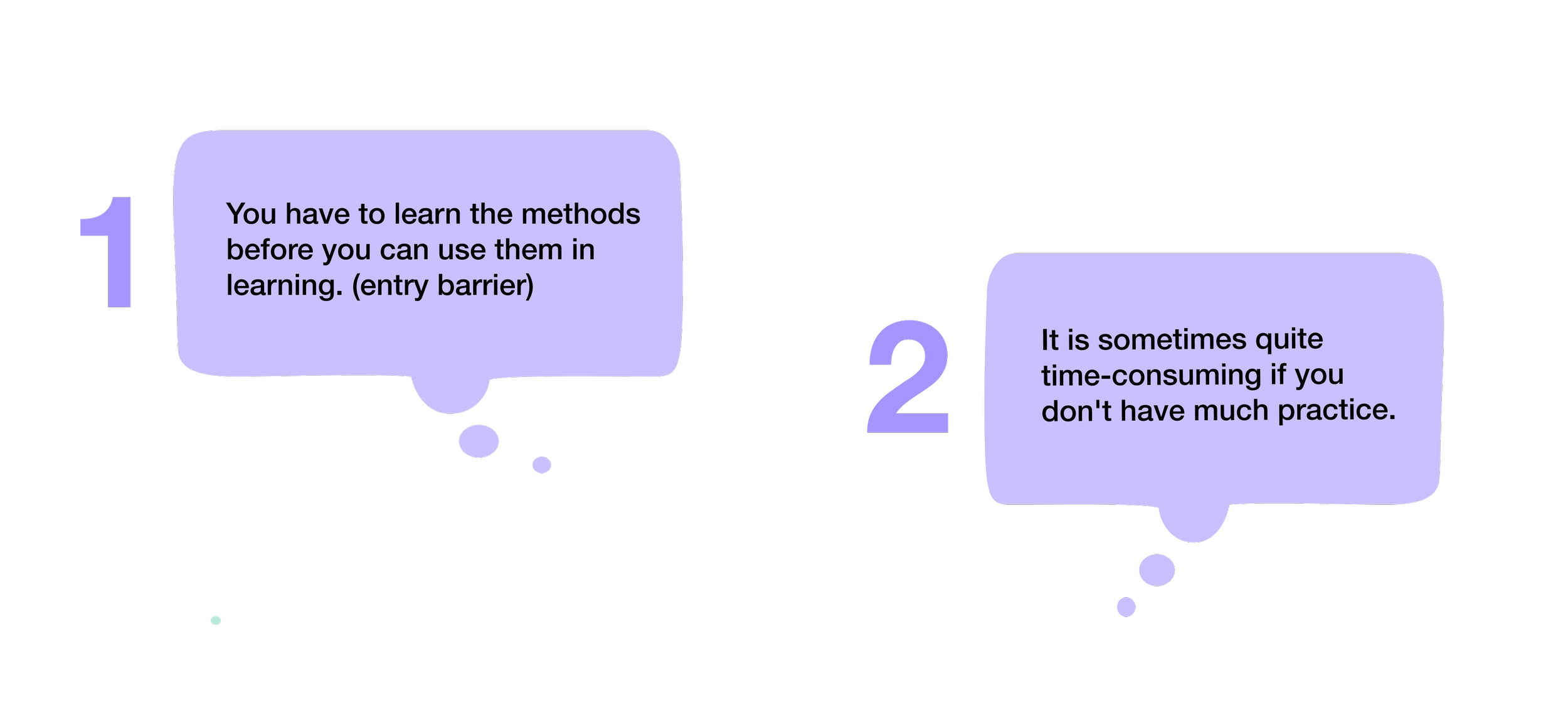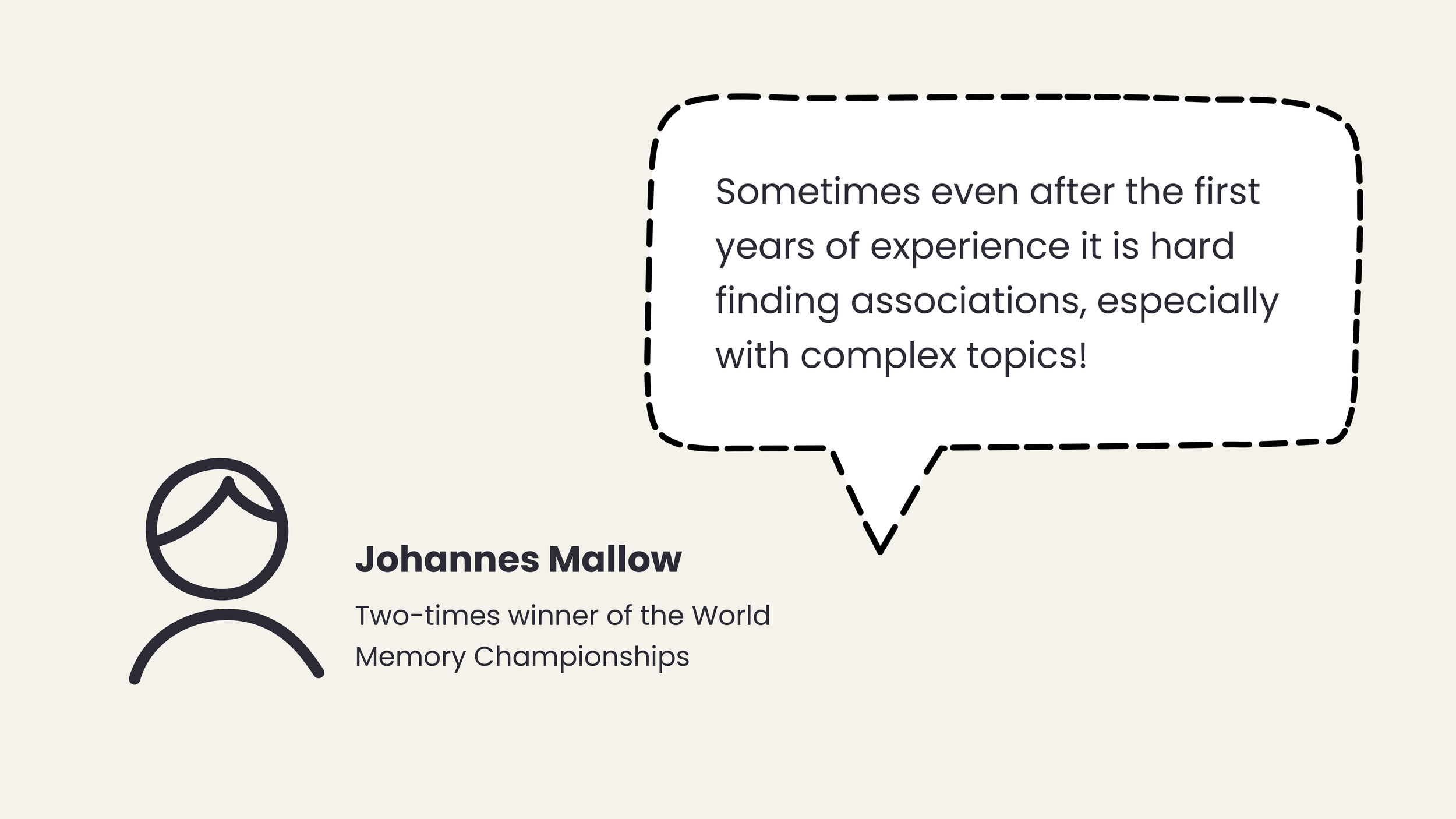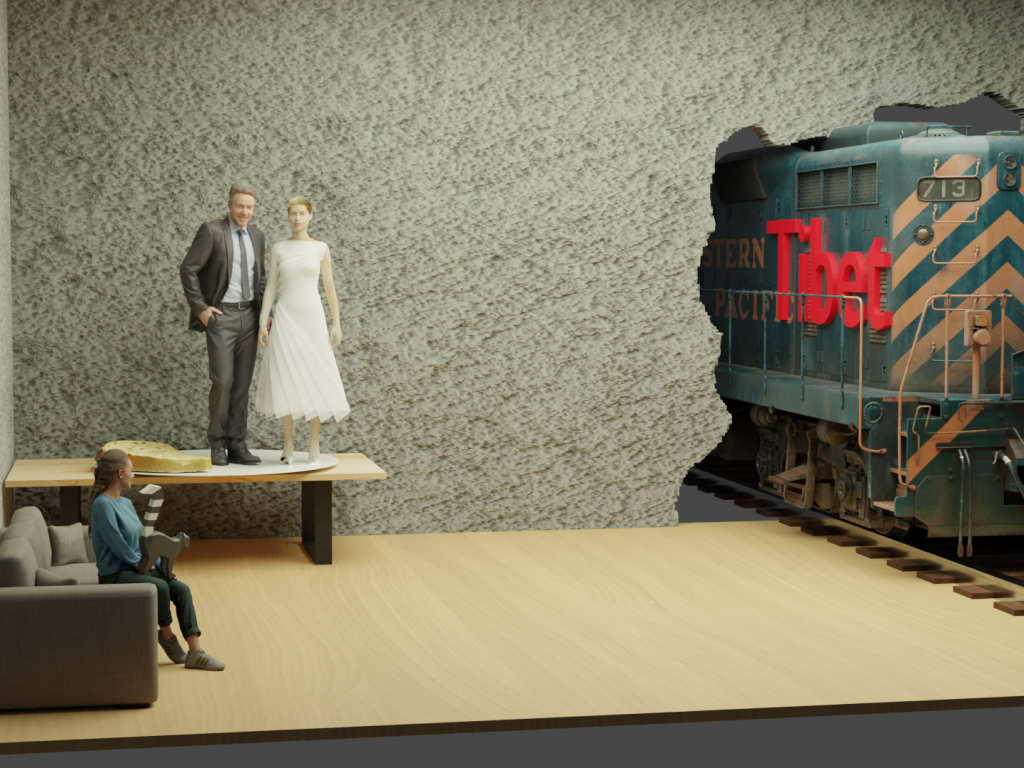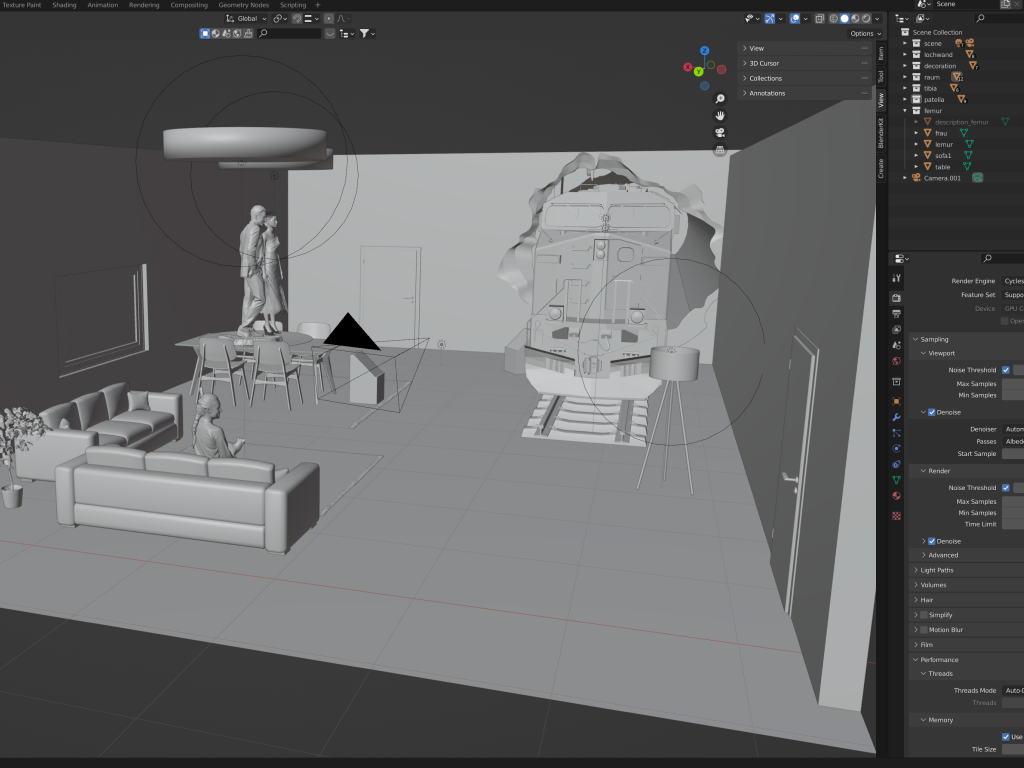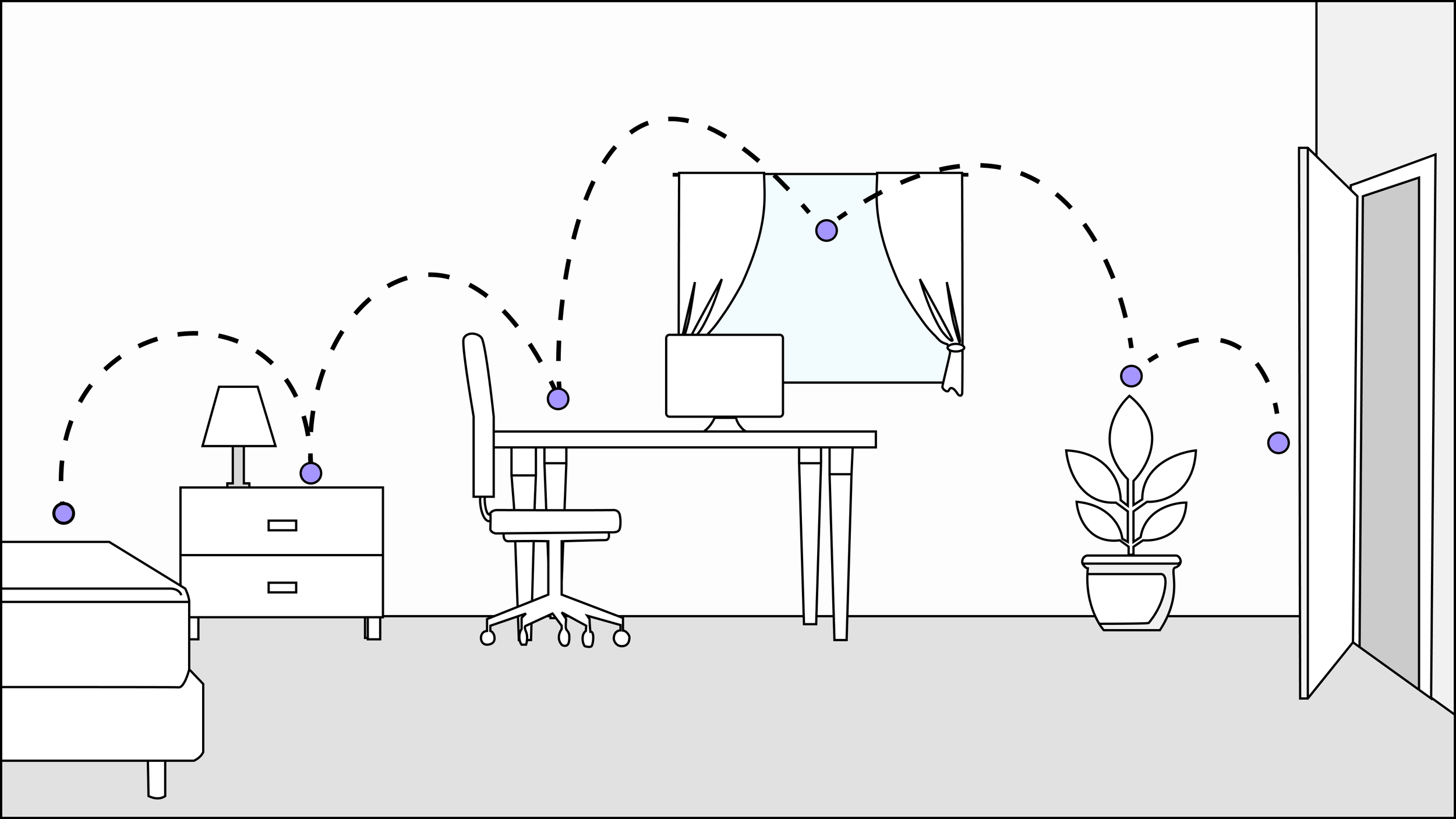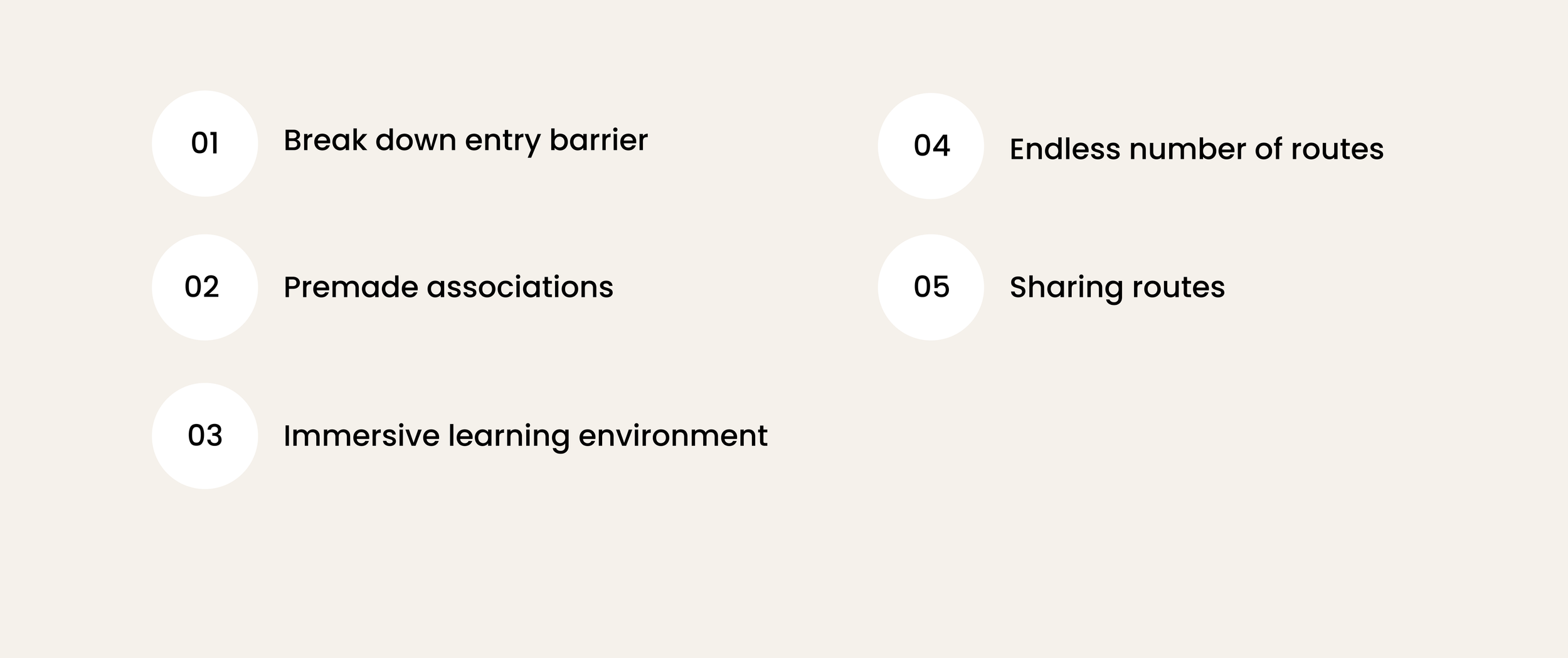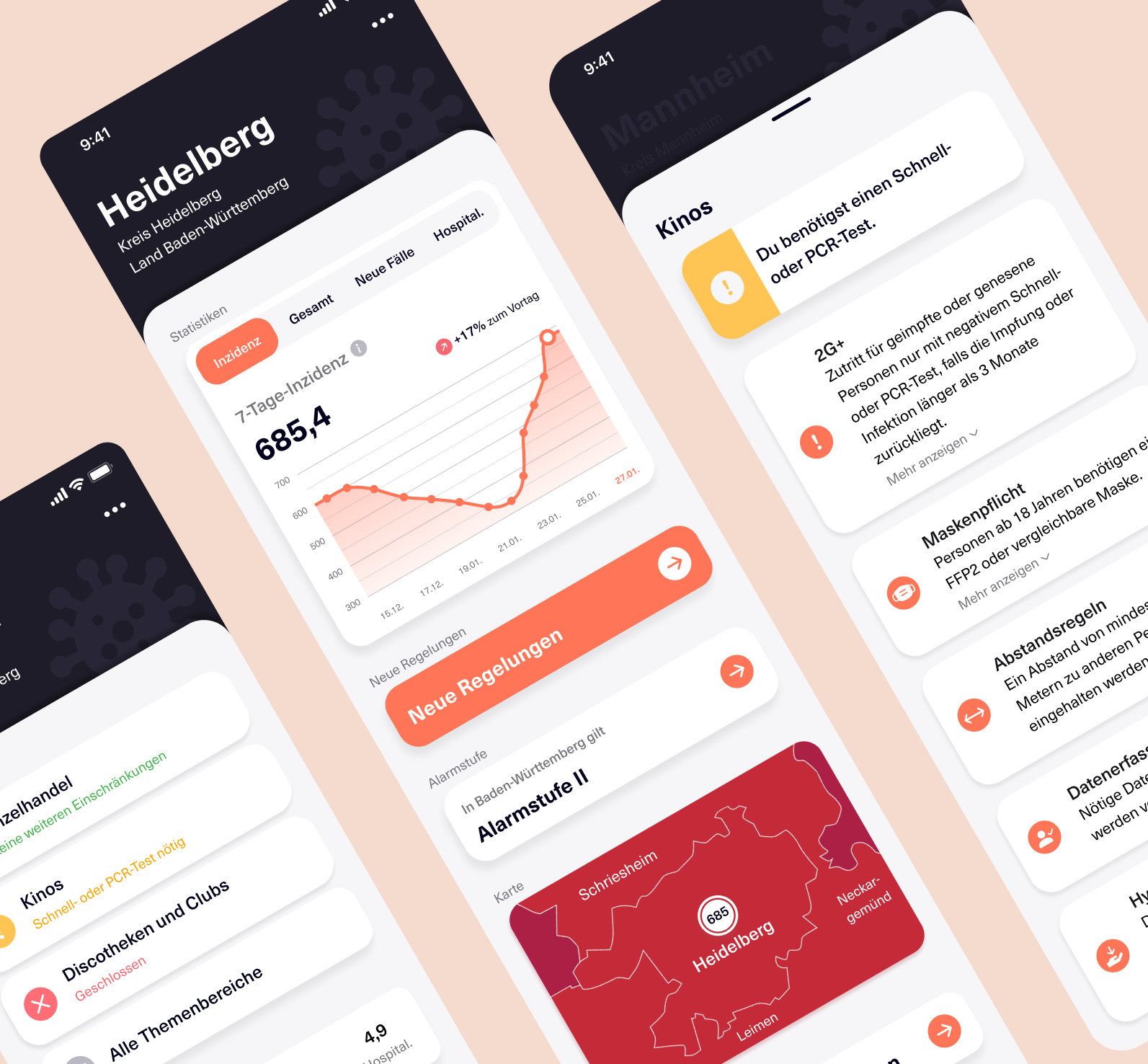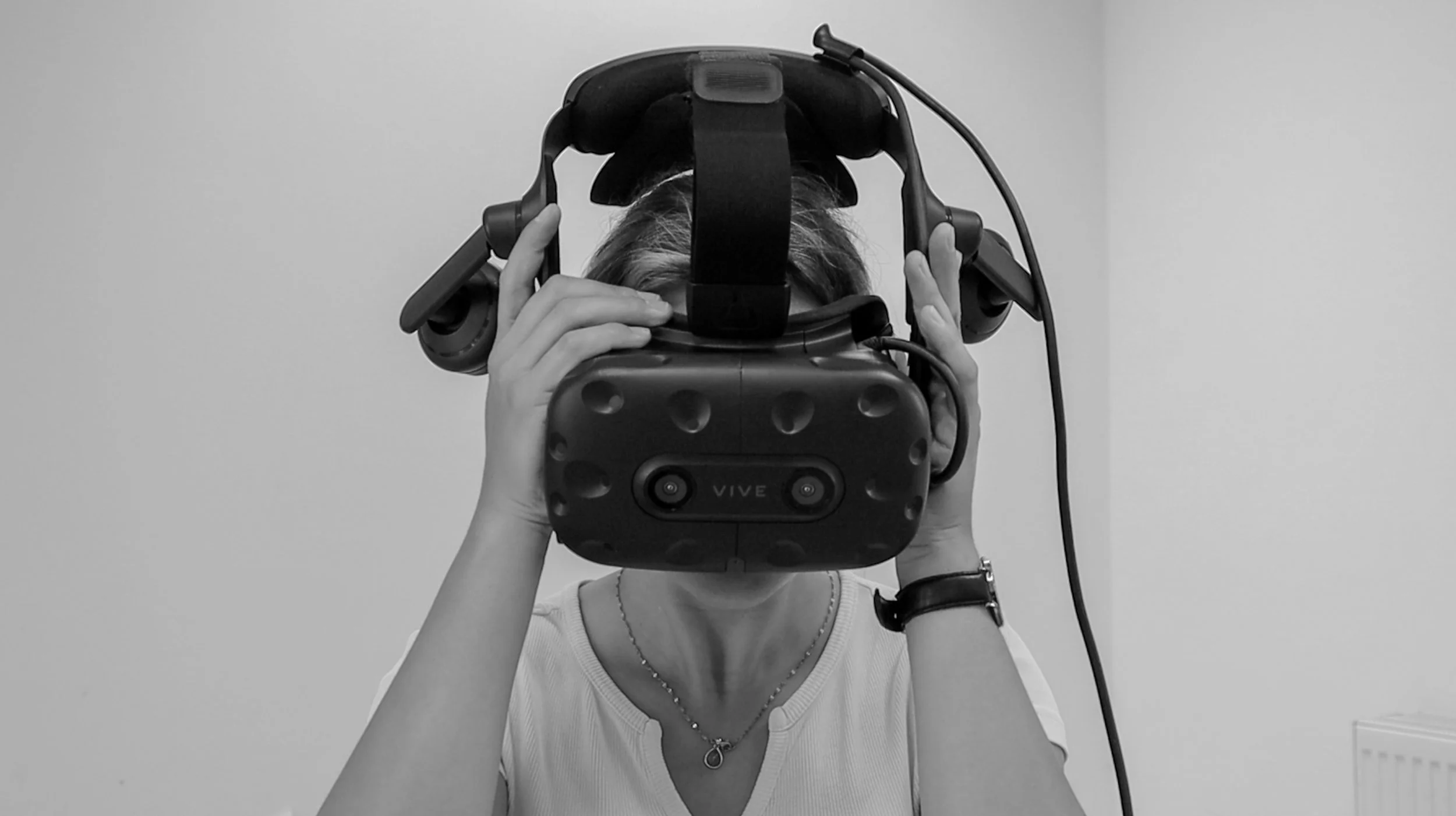
Memorize - future learning with VR
A virtual reality learning concept for more fun and efficiency through the use of memory methods.
Time frame:
5 months, 2022
Project Partners:
Leornard Thillmann, Marvin Ebert
Course:
Invention Design II, supervised by Ludwig Kannicht @HfG Schwäbisch Gmünd
218
names and faces in 15min.
7485
Binary Digits in 30min.
These are current world records in memorization.
The Idea
Physiotherapists, doctors or pharmacists, for example, also have to learn a lot by heart in the course of their training. For many of them, this costs a lot of time.
During our research, we came across various memorisation methods that are currently being used to win world championships. These methods can be used to memorize various things more quickly and over longer periods of time. In our project, we looked at how to make these memory methods more accessible so that more people can benefit from them in their everyday lives.
Process
We decided on the overarching theme of education and did a wide range of research on it. In the process, we came across the methods with which one can learn by heart very efficiently. Since we asked ourselves why more people don't use these methods, we looked for reasons why.
There were two core problems that we were able to identify with self-experiments and user tests:
During the project, we were in close contact with the two-time world memory champion Dr. Johannes Mallow. This allowed us not only to improve our prototypes through user testing, but also to get regular feedback from Johannes.
Self experiment with the learning the 20 most dangerous animals in order with the Route-method (Loci-method):
User testings to test problems with learning the learning method:
Prototyping
We created different prototypes. Starting with associations that we simply gave users, to a Minecraft prototype, to a 3D prototype we created ourselves in Blender.
In our process, we were able to solve both core problems. We also decided to use a VR application, as this offers many more advantages.
Rapid prototyping with minecraft, creating rooms with the learning content.
Working on the final 3D prototype on blender:
Loci-method
In our prototype, we focused on the so-called loci method. In this method, you look for different points in a room. In our prototype, the first point is the sofa, for example. If you want to remember the Latin name for the femur, for example, you think of an association with the sofa. In our example, a woman is sitting on the sofa. A lemur is sitting on her lap. Lemur sounds similar to "femur", which is the Latin name of the thigh bone. Since the lemur sits on the lap, it sits on the bone, which is thus remembered. The more bizarre the associations are, the easier it is to remember them.
So with us, users can acquire ready-made associations for different learning contents. This saves time, allows you to keep what you have learned in your head for longer, and even makes it fun to watch the scenes.


